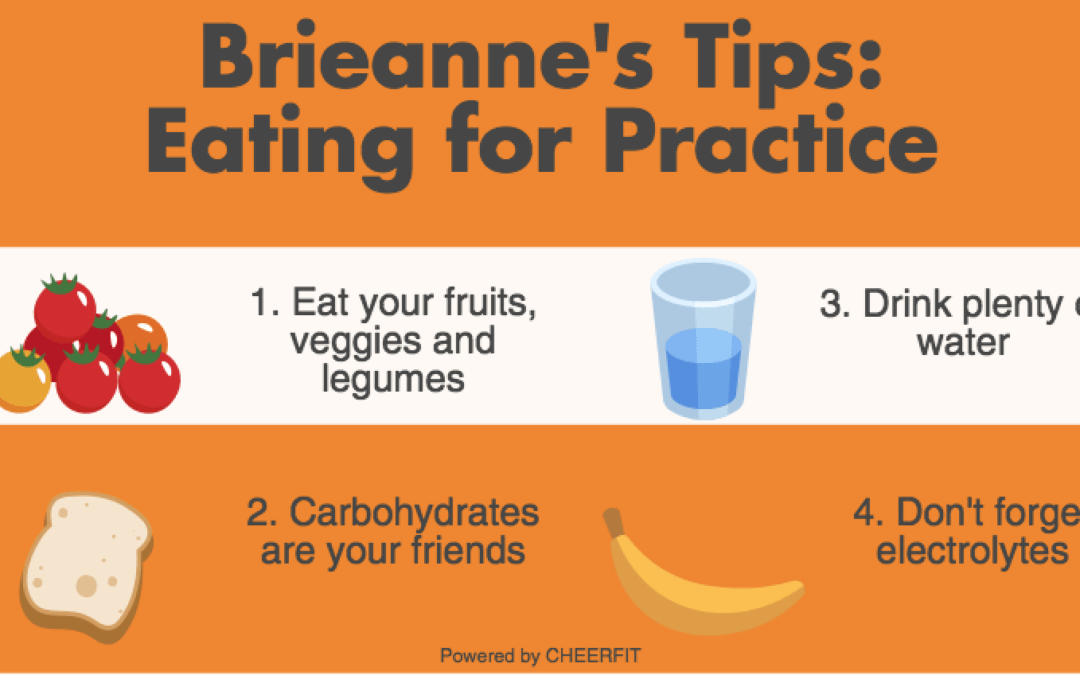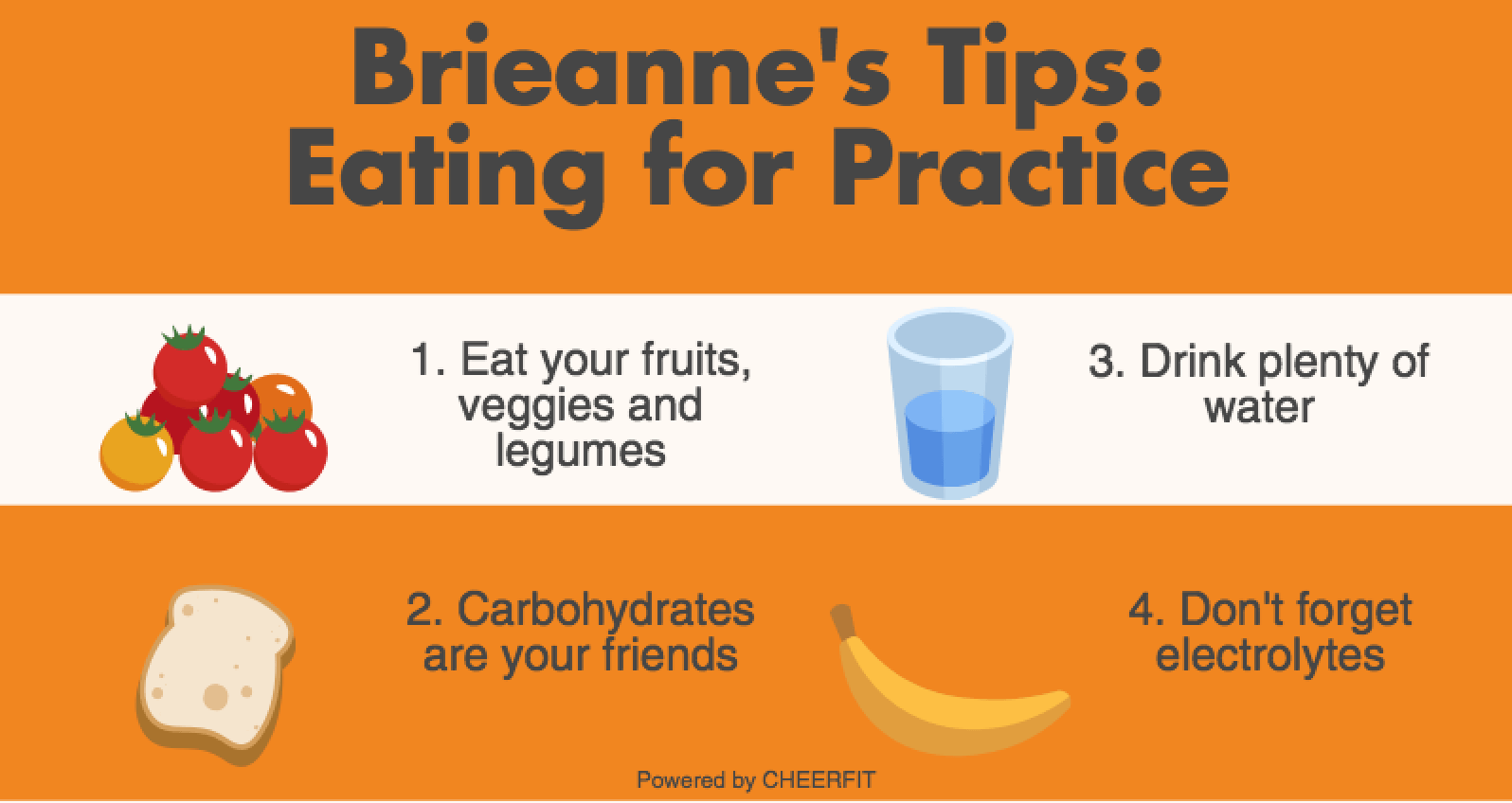
Eating For Practice
Hey team!
We’ve noticed that you have lots of questions about how to best maintain that healthy, active lifestyle that you embrace and share with your friends in the cheerFIT community. Today, it’s easy to get overwhelmed with all the different, even conflicting answers you can find to seemingly simple questions on the internet, such as “How can I eat to maximize my performance?”, or “Do I really need a rest day, and does active rest count?”. Each month, I’ll be weeding through research evidence and giving you the facts straight from the scientists’ work itself – both what you want to hear and maybe what you don’t – for questions asked by you, our incredible cheerFIT ambassadors and parents!
This month, you asked: What should I eat before and after practice?
The truth is, there is no one right way to eat before or after practice. The relationship between how you fuel yourself and exercise depends on many different factors, such as 1) the type of exercise (e.g. endurance training versus high intensity or cardio training) both the day of and during the next planned physical activity period, 2) the time of day, and 3) your own biology (e.g. if you have any health conditions that require a special diet). You will learn what works for you over time and by trying new ideas. While figuring it out, try following some of the following rules supported by research:

Eat your fruits, vegetables and legumes. Your muscles use glycogen as a fuel source, and although your muscles can replenish a small amount of glycogen used by? themselves, they need your help. Carbohydrates contain glucose, which is used to produce glycogen. Carbohydrates before a workout help to ensure that glycogen is readily available for your muscles. Carbohydrates after your workout replenish the glycogen spent to keep your muscles going. Unrefined carbohydrates, both simple and complex (for quick and sustained release of energy), are your best choice – so fruits, vegetables and legumes are great! What’s more, fruits and vegetables contain vitamins, nutrients, fiber and antioxidants (depending on the fruit/vegetable) that your body needs for a variety of processes.
Make friends with carbohydrates. Carbohydrates are your friend, and they go great with protein for some double-duty muscle care. A large amount of carbohydrates is required to replenish glycogen stores – this amount is likely more than you can reasonably eat. At the same time as replenishing glycogen stores, you also want to support the building of muscle-protein. As such, pairing carbohydrates with protein in the hours immediately after practice can help you do both! As always, pick lean proteins! You can also eat protein throughout the day to promote muscle-protein building all day long. Since most of you have high intensity training sessions consecutively or on consecutive days – between cheer practice, tumbling practice and conditioning sessions (not to mention those cheerFIT challenges!) – it’s important to know that eating carbohydrates and protein during early recovery has been shown to help your performance during the next activity session.
Drink your water! But you know that already 🙂
Don’t forget electrolytes! While you hydrate, also focus on getting in electrolytes to fend off muscle cramps or soreness. This can be in liquids like rooibos teas, or in those fruits and vegetables you are eating (for example: bananas are a prime example of a great source of potassium). Be cautious of many highly-advertised sports drinks, as they can be high in refined sugar.
References available upon request.

Brieanne
Brieanne is a former cheerleader, sprinter and football player who is currently completing her PhD in Population Health at the University of Ottawa in Ontario, Canada. A ‘scientist-in-training’, Brieanne has a public health and epidemiology background, and extensive research experience. Brieanne will be putting her research and knowledge translation skills to work to find good, scientific evidence to answer your questions about health and fitness. Today she stays fit through a combination of weight lifting, sprint training, HIIT, pilates, yoga, and most outdoor sports (e.g. running, hiking, skiing, climbing), depending on what the weather is like!


